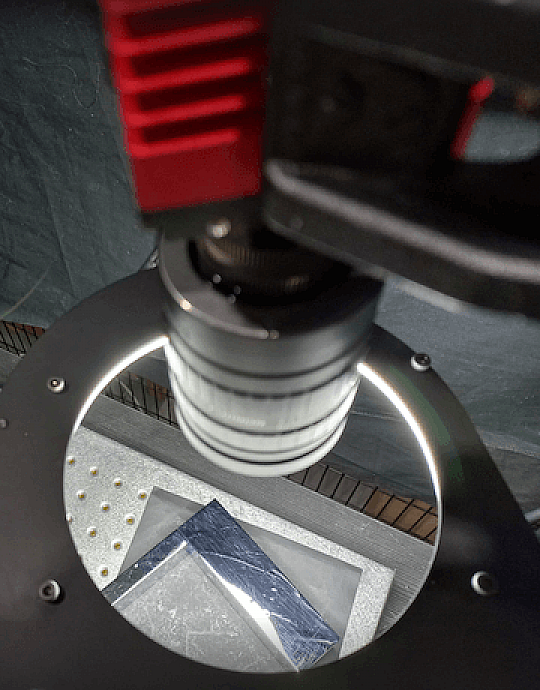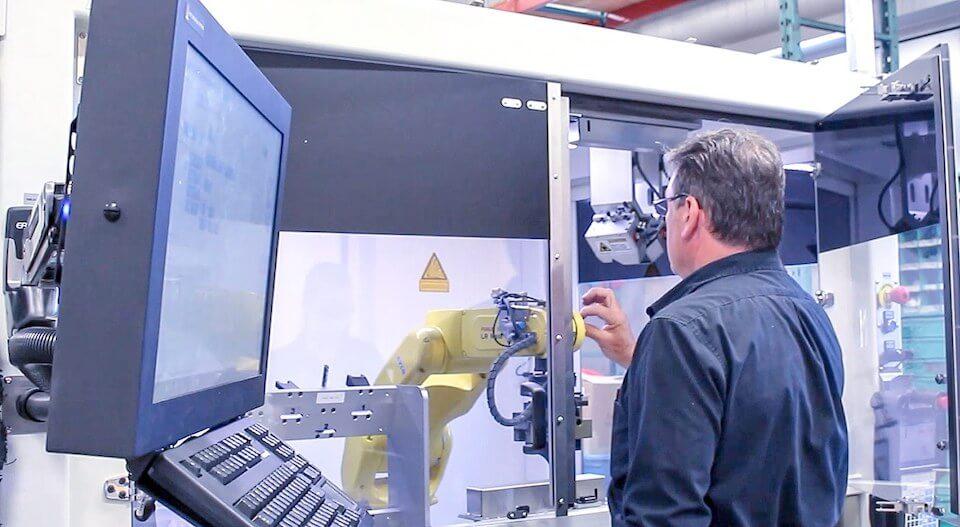How Robotic Technologies Apply to Visual Inspection

Visual Inspection26 . 01 . 2021 How Robotic Technologies Apply to Visual Inspection Visual surface inspection is a crucial step in the manufacturing process, especially for industries such as aeronautics and orthopaedics. Usually performed by operators, visual inspection requires certain levels of repeatability and consistency that, if not achieved, can result in heavy costs to manufacturers. The AV&R’s automated visual inspection system, the VI-X, provides a solution for manufacturers wishing to improve their inspection. This unique technology, developed by AV&R over the past 29 years, brings together image acquisition, lighting and state-of-the-art software (OwlVision) equipment in one system that can detect and classify 2D and 3D surface defects in an automated manner, as well as produce data reports. Why Automate Your Inspection Operations? Solve staff shortage problems Improve repeatability of the operation according to your production requirements Enhance adaptability to process changes and inspection requirements through parameter management in OwlVision software Stabilize quality consistency: Neither over-quality nor under-quality that can increase your production costs Harvest accurate data around your parts to guide you in managing and improving your operation Plastic Robotic Visual Inspection Demonstration https://www.youtube.com/watch?v=r7I3YA-ad4M The VI-X Works Simply and Efficiently With 5 Basic Steps: Load a batch of parts into the system The robot will acquire images of the surface of each part The software will perform surface flaw detection Decision-making based on OwlVision Software defect detection & classification according to manufacturer’s criteria and tolerances Information report for each part to enhance the inspector’s decision-making: compliance with predefined parameters and defect characteristics https://www.youtube.com/watch?v=Q9FwTCVvlAo Why Is Our Inspection Technology Unique? Thanks to Our OwlVision Software. Intuitive, easy to use and specifically adapted to inspection operations, it allows simple set-up of your inspection process.
Automate Visual Inspection Operations to Increase Production Output

The issue This Quebec manufacturing company encounters production difficulties related to the quality control of the metal surface finish of the parts produced (faucets). Parts must be free of defects before being shipped to the customer. Visual inspection is carried out manually by inspectors. The underlying issues are: Inconsistency of parts inspection – defects not found or acceptable parts rejected. Non-optimal production rate – manual visual inspection is a bottleneck and thus slows down the whole production. Difficulties in recruiting inspectors due to labor shortages. Initial situation Inspection consistency issues under or over quality of parts’ inspection Manual process Inspectors who carry out the control quality of parts manually Slowdown in production Inspection is a production bottleneck The solution Automated solution which adapts to production: SI-X Grayscale camera Circular and diffuse lighting Computer Inspection Software OwlVision Light The results AV&R experts have pre-programmed an algorithm specific to a type of detection: the detection of scratches on an ultra-polished metal surface. This algorithm made it possible to detect only the defects deemed rejectable by the customer, in particular scratches. By eliminating false defect detections and automating inspection, the customer was able to achieve consistent inspection results while increasing throughput. The OwlVision inspection software also allowed the customer to obtain detailed inspection reports, and thus obtain key information on its production (size, type, or even frequency of defects detected). Consistent inspection through repeatable detection of defects Increase in cadence inspection by elminating a bottleneck Acquisition of key data thanks to OwlVision Light’s inspection reports Ready to Automate Visual Inspection? GetBot! makes it easy to implement robotics and we made it easy for you to get started. Calculate your ROI and design a solution fitting your business in a few clicks (with approximate costs) and more by creating an account. Get Started Related Articles See all
Automation of Deburring Operations Supporting Business Growth

The Issue APN Global is a Québec-based growing company looking for solutions to increase its production capacity. As a pioneer in 4.0 concepts, the company looked to automation to improve its deburring capacity (removal of edges on metal parts). With the situation of a labor shortage, it is difficult for APN Global to hire manual operators to perform the deburring operation. Training of these operators is lengthy to ensure the quality and consistency their customers expect. Initial Situation Hundreds of parts to deburr each year 5 manual operators for deburring operations working in 2 shifts 1,500 to 2,000 working hours per year per operator The Solution Robotic system: BF-X 200-c DEBURRING Robot ©Fanuc – LR Mate 200iD Abrasive Brushes – Bristle Brush ©3M Part flipper Part loading drawer Integration of tools used during manual process Reamer and Flex Hone Programming and operating software BrainWave The Results Within 3 weeks after the installation of the robotic system at APN Global, the company had programmed and approved the automated deburring of 6 different parts. This represents around 750 hours of fully automated deburring per year, which is the equivalent of an additional half-resource. After a short customised training on the BrainWave software, APN Global is now autonomous for the robotic programming adjustment of the other parts in its production. The next goal for APN Global is to increase the automated deburring hours per year, in addition to the work done by its manual operators. Constant Quality Thanks to the robotic system Productivity Capacity Increase 750 hours of deburring per year (and more to come) Client’s Flexibility and Autonomy To program automated deburring for new parts AV&R’s robotic system is an integral part of APN’s finishing operations. It’s a tool we can program internaly and easily operate in our shop. William St-Germain, Automation Director Related Case Studies See all
